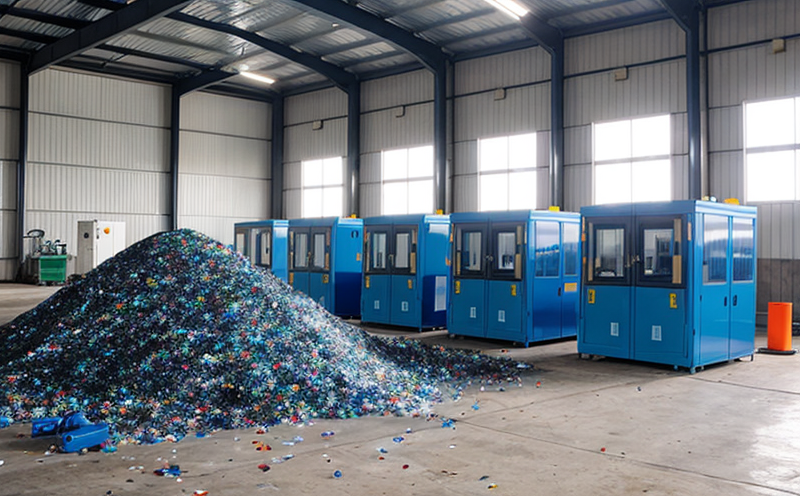ASTM D7882 Recycling of Multi-Layer Plastic Packaging
The ASTM D7882 standard provides a framework for the recycling and remanufacture of multi-layer plastic packaging. This service is particularly important in sectors where complex plastics are used, such as food packaging, pharmaceuticals, and electronics. The process involves breaking down mixed plastics into raw materials that can be reused without compromising product integrity or safety.
The ASTM D7882 test ensures that the recycled plastic maintains its original properties, thereby enabling manufacturers to use it effectively in new products. This is crucial for businesses aiming to reduce waste and comply with environmental regulations while maintaining quality standards. The recycling process involves several steps including sorting, cleaning, and mechanical processing.
Sorting requires precise identification of different layers within the plastic packaging, which can be a challenge due to the complexity of multi-layer designs. Once sorted, the plastics undergo cleaning to remove contaminants such as labels, adhesives, and other foreign materials. Mechanical processing then breaks down the plastic into smaller pieces, ready for further treatment.
The ASTM D7882 test evaluates several key parameters including color stability, mechanical properties, chemical resistance, and thermal stability. These tests are critical in ensuring that recycled plastics meet the same quality standards as their virgin counterparts. By adhering to these standards, businesses can ensure product consistency while contributing positively to sustainability efforts.
Sorting technologies such as near-infrared spectroscopy (NIR) play a vital role in identifying different layers of plastic. NIR scanners are capable of distinguishing between various types and colors of plastics, facilitating accurate sorting before mechanical processing. Once sorted, the plastics undergo chemical cleaning processes which may include washing or degreasing to ensure all contaminants are removed.
The recycled plastic is then subjected to mechanical processing such as grinding and extrusion to break it down into small particles suitable for reprocessing. During this stage, additives like stabilizers, antioxidants, and colorants can be incorporated if necessary. The processed material undergoes rigorous testing according to ASTM D7882 guidelines to confirm its suitability for use in new products.
Testing focuses on several critical areas: tensile strength, impact resistance, flexibility, chemical resistance, thermal stability, and color retention. These tests are performed using various instruments including universal testers for mechanical properties, UV-Vis spectrophotometers for color measurement, and differential scanning calorimeters (DSC) for thermal analysis.
- Near-infrared spectroscopy (NIR)
- UV-Vis spectrophotometry
- Differential Scanning Calorimetry (DSC)
The results of these tests are used to assess the quality and performance of recycled plastics. Compliance with ASTM D7882 ensures that manufacturers can use recycled materials confidently, knowing they meet stringent quality standards.
Scope and Methodology
The scope of ASTM D7882 encompasses the recycling and remanufacture of multi-layer plastic packaging. This includes evaluating the mechanical properties, chemical resistance, thermal stability, and color retention of recycled plastics. The methodology involves several stages starting with sample preparation followed by testing using various instruments.
Sample preparation is crucial as it ensures that the tested samples are representative of the recycled material. Samples are typically taken from randomly selected batches after sorting and cleaning processes have been completed. Once prepared, these samples undergo mechanical processing to achieve uniformity before undergoing further tests.
The testing process follows strict protocols outlined in ASTM D7882. Mechanical properties such as tensile strength and impact resistance are determined using universal testers capable of applying controlled loads on the sample. Flexibility is tested by bending specimens through specified angles, while chemical resistance is assessed via immersion tests where samples are exposed to different solvents.
Thermal stability is evaluated using DSC which measures changes in heat capacity as a function of temperature. Color retention is checked using UV-Vis spectrophotometers capable of measuring reflected light at specific wavelengths. Each parameter has specific acceptance criteria defined by ASTM D7882, ensuring consistent and reliable results.
The data collected during these tests provides insights into the quality and performance characteristics of recycled plastics. This information is vital for manufacturers who wish to incorporate recycled content into their products while maintaining product integrity and safety standards.
International Acceptance and Recognition
The ASTM D7882 standard has gained widespread recognition and acceptance internationally. It is widely adopted by industries involved in the recycling and remanufacture of multi-layer plastic packaging across North America, Europe, Asia-Pacific regions, and beyond.
Adherence to this standard ensures consistent quality standards which are crucial for maintaining product integrity and safety during the recycling process. Companies that comply with ASTM D7882 enjoy enhanced reputation among consumers who value sustainable practices. Additionally, compliance simplifies regulatory requirements by aligning with global standards set forth in international agreements like ISO 14001.
Many leading corporations have incorporated ASTM D7882 into their quality management systems (QMS) to ensure they are meeting environmental and sustainability goals. By doing so, these companies contribute towards reducing waste generation and promoting circular economy principles. Their commitment not only benefits the environment but also enhances brand image among environmentally conscious consumers.
International acceptance of ASTM D7882 fosters collaboration between different stakeholders including governments, NGOs, private sector organizations, and academic institutions. This collaborative approach accelerates innovation in recycling technologies leading to more efficient and effective methods for reprocessing plastics.





